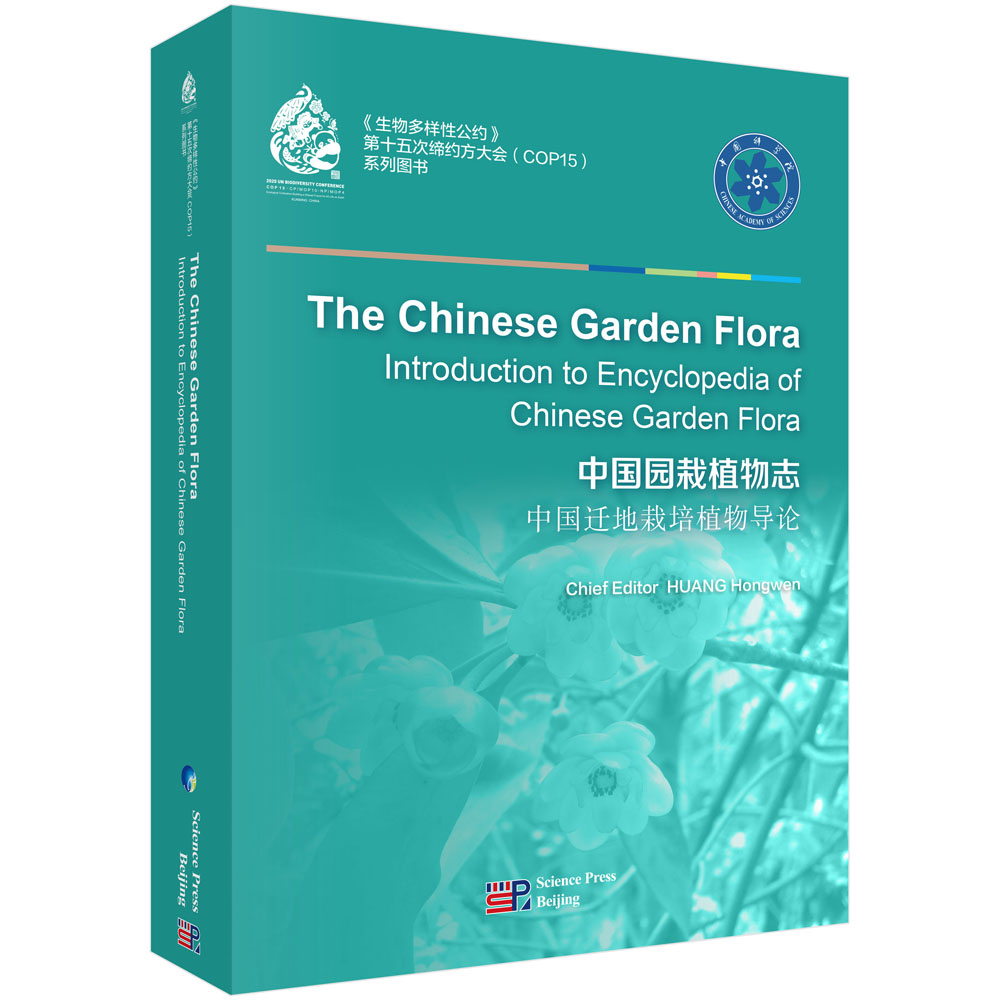
出版社: 科学
原售价: 680.00
折扣价: 537.20
折扣购买: 中国迁地栽培植物导论(英文版)
ISBN: 9787030686848

Ⅰ Overview of Botanical Garden Based Research
Over the past 500 years, as a specialized research institution of botany, the botanical gardens have always played a key role in botanical research, conservation, and application of plant resources. They have a profound scientific connotation, engaging comprehensively in the basic biological research on plant, as well as collection, evaluation, exploration and sustainable utilization of plant resources. They assemble and maintain living collections and discover sustainable uses of plants for human society. Despite various purposes the botanical gardens are set up for, these research activities are the soul of botanical gardens and the backbone of botanical garden development.
The earliest botanical gardens were established in the middle of the 16th century, such as Padua Botanical Garden in Italy in 1545, devoted to the study of plants. Botanical gardens in the 16th–17th centuries focused on studies of medicinal plants and the development of new drugs. However, since the 18th–20th centuries, research activities in botanical gardens rapidly expanded into plant taxonomy and gradually towards various branches of botany, such as plant morphology, organs and anatomy, phenology, plant chemistry, genetics and even today’s plant molecular biology, genomics and metabolomics, etc. The advanced trajectory of scientific research of the world botanical gardens over the past 500 years is not only a microcosm of the whole era of biological sciences, but also an unremitting pursuit of mankind exploration and utilization of plant resources to benefit the development of economy and human community (Huang et al., 2015; Huang, 2018a).
1 Botanical gardens and significance of plant living collections on biological discovery
The research and discovery based on plant living collections have played a prominent role in the evolution of botanical sciences. Botanical research is the core and soul of botanical gardens. Historical literature records that the botanical gardens and their living collections were the inspiration and research resources of many great scientists, such as Carl Linnaeus (1707–1778), Charles Darwin (1809–1882) and others.
Botanical gardens, as the most important research and teaching platform of plant biology during the 18th–19th centuries, made indelible contributions to scientific discoveries and the establishment of theoretical systems. During this period, the botanical gardens provided a good research environment and convenient observation of living plants, and thus promoted botany and biology. The following stories of botanical gardens and renowned scientists are worth mentioning (Huang et al., 2015; Huang, 2018a).
1.1 Linnaeus and taxonomy
After many years of his European study tours, Carl Linnaeus returned to his hometown, Sweden, in 1738 and joined Uppsala University, his alma mater. Soon in 1741, he became a professor of botany at the university and also director of the Uppsala Botanical Garden until he died in 1778. Over more than 30 years of his professional career, he focused on research and teaching in the Uppsala Botanical Garden. In nearly 40 years after he published Systema Naturae in 1735, Linnaeus devoted his whole life to establishing classification systems of animals, plants and even minerals. Especially after 1741, when he was in charge of the reconstruction of the Uppsala Botanical Garden, he adopted his classification system in the garden design and living plants allocation, and made tremendous efforts to prove the feasibility of his theory (Blunt, 2002). Although Linnaeus system was replaced by other natural systems in the late 19th century due to its obvious subjectivity, and no longer used in plants configuration design of botanical gardens (Jarvis, 2007), his Philosophia Botanica published in 1751 elaborated key points of management and plant cultivation of botanical gardens (Freer, 2003). In addition, Linnaeus’ teaching of botany was usually carried out in botanical gardens. Students were encouraged to trust the practice instead of academic authority. Obviously, botanical gardens made a valuable contribution to the foundation and development of plant taxonomy in the 18th–19th centuries (Huang, 2018a).
1.2 Henslow and Darwin on speciation and evolution
Darwin’s The Origin of Species published in 1859 is considered to be a landmark in the history of biological science. In the 20 years before the publication, Darwin was influenced and enlightened by several masters in biology. The most important one is the founder, designer and leader of Cambridge Botanical Garden, Prof. John Stevens Henslow (1796–1861) of Cambridge University. He was the supervisor and mentor of Darwin. Henslow designed the Cambridge Botanical Garden for the purposes of both scientific verifications of experiments and botanical teaching of biological theory hypothesis. As early as 1829, Henslow developed a mature idea of sp